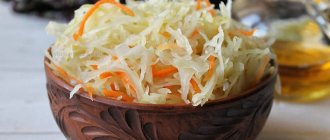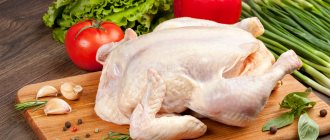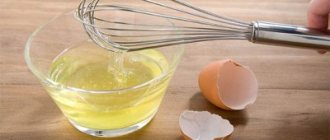Broccoli is an incredibly nutritious vegetable, rich in vitamin C and other beneficial nutrients. 100 grams of broccoli provides you with about 150% of the recommended daily intake of vitamin C. 100 grams of broccoli contains 34 calories.
Broccoli contains about 4.5 grams of carbohydrates per 100 grams, which means that broccoli is relatively safe for low-carb and keto-friendly diets.
Broccoli has fairly large heads that you probably won't use all of. Or even when you've cooked everything, there are leftovers. This inevitably begs the question: does broccoli go bad?
Of course, since broccoli is a plant product, we all know that it spoils. But there are many questions about broccoli. People are unsure whether it needs to be refrigerated, how to store it after cooking, and whether soft or yellow broccoli is ok to eat.
We'll tell you all about it. Let's look at the shelf life, shelf life and signs of spoilage of broccoli. If this is what you're looking for, read on.
Choosing broccoli for storage
Like most vegetables, broccoli comes in varieties with different ripening times. When preparing to grow, in the spring it is important to decide whether you want to grow broccoli for winter storage or not. If the purpose of planting is to eat cabbage in the summer, then early ripening varieties are suitable. If you want to cook dishes from it in winter, there are mid-season or late-season varieties for this. The difference is that the inflorescence heads of later varieties are denser and heavier. The slower and longer the head of cabbage ripens, the more nutrients it accumulates, and the longer it can be stored.
The next thing to know is that not every fork of broccoli is suitable for storage. Choose heads no more than 20 cm in diameter, and preferably 12-15 cm. The color should match the color of the variety, while having a uniform, rich shade. Pay attention to the inflorescences. They should be closed and located close to each other. The buds along the edge of the fork should be small, towards the center their size increases
Do you need to wash cabbage?
Housewives often ask: do they need to wash cabbage? Definitely yes. But not after harvesting the garden or shopping at the store, but before preparing dishes.
- Prepare a large bowl, fill with water, add 3-4 tsp. vinegar.
- Dip the inflorescences into the solution for 12-15 minutes to remove debris and insects.
- Remove the vegetables, rinse, and blot to remove moisture.
- Use immediately for cooking.
Do you know that…
Broccoli heads should go into the refrigerator half an hour after they were brought from the store or picked from the garden. Do not waste time, otherwise the vegetables will lose their nutritional value and freshness.
When to Harvest
Broccoli should be cut for storage as late as possible, but it is important not to allow it to become overripe. It is better to choose a cool and cloudy day, or go out into the garden to collect early in the morning or late in the evening. Do not wait for frost, otherwise the entire harvest will be lost.
When cutting, leave a stem about 15 cm long. If the day is warm, do not leave the cabbage heads lying in the open air. Take them immediately to the cold, because broccoli loses its taste very quickly and loses its elasticity. Literally after half an hour of “rest” in the shade, 30% of the nutrients are lost.
Frozen gifts of the fields
Try storing broccoli frozen for the winter. Experienced housewives claim that when properly frozen, the crop retains its excellent appearance and maximum nutrients.
Find out how to store other types of cabbage at home in winter: white cabbage, cauliflower, Peking cabbage, kohlrabi.
Let's start with preparation
To freeze broccoli for the winter, you need to prepare it properly. Select strong, healthy green heads with a diameter of 8-15 cm. Cut off the stalk, remove the leaves, and disassemble the cabbage itself into single inflorescences.
Before freezing, do not forget to get rid of any insects that may remain between the flowers. For this:
- Fill a basin or bowl with water, add 40-45 g of salt per 1 liter of water.
- Lower the inflorescences, leave for 20-25 minutes, then remove and rinse thoroughly.
- Drain in a colander to drain excess moisture.
The stem of the plant contains the lion's share of nutrients. It can be successfully eaten by first cleaning the top layer
Freezing without blanching
You can freeze broccoli for the winter without blanching:
- First, rinse and place on a napkin to dry.
- Then pack into bags and freeze.
Some housewives complain that after defrosting, cabbage changes color and becomes soft. Yes, it will not be as elastic as before, but the color will remain. To prevent the inflorescences from becoming soft, it is recommended to freeze them using a different recipe.
First we blanch
To freeze broccoli for the winter and maintain its elasticity, you must first blanch it.
- Prepare 2 pans. Place one on the fire, adding 1 tsp. citric acid per 1 liter of water, fill the second with cold water and ice.
- Place broccoli in boiling water in portions and blanch for 1-2 minutes. Then immediately cool them in ice water to stop the heating processes.
- Place the inflorescences on a napkin or towel and allow excess liquid to drain. To ensure that the frozen product retains its nutritional value, it must be completely cooled.
- Pack the semi-finished product in plastic bags and place in the freezer. Freezing will keep it fresh for the next 8-10 months.
Tip of the day
There are varieties that, with or without blanching, after defrosting, are only suitable for pureed soup. If you don’t know how your particular cabbage will behave, put a small piece in the freezer for 24 hours. During this time, nothing will happen to the entire batch, and after defrosting the “sample”, you will know what it is good for.
And finally, a video from which you will learn how to cook broccoli to preserve all the vitamins:
Now you know everything about proper freezing and other storage options for broccoli. And with the onset of winter cold, you can easily prepare a lot of delicious dishes, giving your body the vitamins that cabbage contains.
Store correctly and be healthy!
Useful materials:
- Broccoli is a cauliflower Cauliflower is an annual plant. The inflorescences are white, may have a slightly yellowish tint, and occasionally...
- How long do potatoes last in the refrigerator? How to store potatoes Raw potatoes - 3 months For storage at room temperature, it is important to pour potatoes...
- Cabbage with apples With the arrival of autumn, every housewife tries to prepare sauerkraut and everyone has a recipe for its preparation...
- Growing broccoli Broccoli is also called asparagus cabbage, and, in fact, it is a variety familiar to all of us...
How long does broccoli last?
The duration of storage of broccoli depends on the temperature and humidity. The lower the temperature, the longer the cabbage is stored:
- in the refrigerator, at a temperature of 4°C to 7°C – no more than 3 weeks;
- in the cellar, where the temperature remains stable from 0°C to 3°C - up to two months;
- frozen (minus 18°) – from 6 to 8 months.
If you decide to store in the refrigerator or cellar, then keep in mind that the air humidity should be at least 90%.
Optimal conditions
Broccoli cannot be kept warm for a single extra minute, and also requires constant high humidity . Therefore, the only suitable storage location is in the refrigerator (or frozen in the freezer).
Storage conditions: temperature from 0 to 10 °C and humidity 90-95%. This is the reason why you can’t keep broccoli in your apartment.
But even if the conditions and rules of preparation and storage are observed, broccoli can last fresh for a maximum of two weeks, more often - no more than a week . The only way that will provide you with broccoli for 6-12 months after harvest is to freeze it.
Method for storing broccoli in the basement
For storage in the basement, three things must be observed:
- temperature from 0° to 3°;
- high humidity;
- good ventilation.
Plastic boxes with holes are best for storing broccoli. Their bottom should be covered with a damp cloth. Place the cabbage heads with the stem on the cloth. Try to keep the forks touching each other as little as possible.
To maintain moisture, stretch a piece of plastic wrap over the box. The cellophane should not touch the cabbage; there should be a small gap between them. There is no need to cover the holes in the sides of the drawers. This will help prevent rotting.
The humidity should be checked periodically. If necessary, spray the bottom of the box with water from a spray bottle. Water should not get on the heads of cabbage!
Where to apply
Broccoli is rich in various vitamins and microelements, which is why it is highly valued.
In cooking
This type of cabbage contains a minimum of calories and a maximum of nutrients. Broccoli is consumed fresh, boiled, stewed, baked or fried . It is especially useful in its raw form, and frozen inflorescences are close to fresh in value.
Boiled cabbage is used as a side dish and for making salads, blanched cabbage is used as an ingredient for casseroles, and broccoli soups have a delicate taste and low calorie content.
A hit is a puree soup or fried broccoli florets in a batter made from a mixture of eggs and breadcrumbs. If you serve this dish with cheese sauce, it will acquire an exquisite taste.
For baby feeding
Broccoli is indispensable in baby food, as it has many beneficial properties :
- The hypoallergenic nature of the product allows it to be used for complementary feeding of babies from 6 months;
- the presence of fiber has a beneficial effect on intestinal motility, eliminates constipation and promotes digestion;
- vitamins A, C, K and folic acid increase immunity;
- phytoncides protect the baby from viruses and bacteria;
- The vegetable protein contained in broccoli can replace meat if the child refuses to eat it.
How to Store Broccoli Heads in the Refrigerator
The easiest way to keep broccoli fresh in the refrigerator is to place the cabbage in a plastic bag with several holes in it for ventilation.
Another good way is to place cabbage forks in a container of water. You only need a little bit of water, no more than one centimeter. Check to see if you can leave open containers with liquid in your refrigerator. If excessive evaporation of water can damage household appliances, then do this:
- choose a wide bowl and pour in some water;
- stretch cling film over it;
- make a small hole the size of the stalk;
- insert the forks into this hole so that the edge of the leg is in the water.
Is it possible to freeze broccoli for the winter?
Freezing is a proven method of preserving crops for a long time . Many housewives do homemade preparations and know that any vegetables, as well as fruits and berries, can be frozen.
The main thing is to follow technology and use quality products to preserve vitamins and beneficial properties.
Reference. Broccoli is also called asparagus, it is the closest relative of cauliflower. Her homeland is the Mediterranean. For many years its existence was unknown outside of Italy.
Why do many people prefer freezing when preparing vegetables for the winter? There are several compelling arguments that put this method in first place :
- Space saving . Heads of cabbage divided into inflorescences take up little space in the freezer. When using dense freezer bags, the penetration of foreign odors is completely eliminated. At the same time, the appearance and beneficial properties of the product are preserved for a long time.
- Preservation of vitamins and taste . This method, unlike others, allows you to preserve vitamins and microelements in vegetables and the full range of taste without loss. This is especially important for housewives who prepare fresh vegetables from the garden for children.
- A supply of vegetables is always at hand . Frozen preparations significantly save time and money. You can’t always find broccoli in the store, and the price for this product is high. By taking a bag of cabbage out of the freezer, you can quickly prepare a healthy dish for the whole family.
Take note:
Simple and tasty broccoli preparations for the winter
Recipes for preparing kohlrabi cabbage for the winter
Delicious Pickled Brussels Sprouts Recipes
Useful tips
If you want to serve broccoli dishes all year round, it's easy to do:
- Plant several varieties with different ripening periods. Then already in the middle of summer it will be possible to cut the first harvest. Late broccoli will keep well if you follow our tips.
- When you harvest your last harvest, divide it into three parts. Put the first, small one in the refrigerator and eat it first. Place the second part in the cellar. And when you use it up, it will be the turn of frozen broccoli, which will not lose its quality until late spring.
If you are already an experienced gardener, then I would like to hear how you store broccoli. Do you have any proven methods you could share?
Did the article help you?
Basic Rules
How to store broccoli for the winter? To ensure that broccoli is preserved for as long as cabbage should be stored, you need to not only follow the storage rules.
It is important to choose vegetables that will definitely survive this .
And then collect them correctly so as not to spoil a good harvest, making it impossible to preserve it.
Under no circumstances should cabbage be allowed to become even a little overripe , since eating overripe cabbage is not only tasteless, but also pointless. Broccoli that begins to bloom immediately acquires a bitter taste, toughness and loses most of its beneficial qualities.
To ensure that the cabbage does not become overripe, you should check it a little earlier than the due date , as it may vary depending on conditions. Simple signs will help you determine whether the cabbage is ripe enough:
- fresh, unripe broccoli has a deep dark green color;
- head 10-12 cm in diameter;
- there are no yellow spots on the inflorescences;
- cabbage heads are dense and strong;
- the central inflorescences are slightly larger than the outer ones.
You can also choose fresh cabbage in the store - you can’t go wrong. And if you have your own broccoli crop, and it is ripe enough, then it’s time to start harvesting it properly.
Storage and defrosting
What should you do to keep frozen broccoli as long as possible? To do this, you must select the correct freezing and storage mode. The mode when storage is carried out at a temperature just below zero will not work. The automation periodically turns off the freezer compressor, and the temperature can rise slightly above zero degrees Celsius. No, the freezing must be deep - from 12 to 18 degrees below zero. And it is better to pack the product using a special device - a vacuum sealer, which hermetically rolls up the cabbage, having previously pumped out the air from the plastic bag. Its use will increase the shelf life of broccoli several times.
When you decide to remove broccoli from the freezer for cooking, it is not always wise to defrost it, as this will cause moisture loss in the prepared dish. And in cases where complete defrosting is necessary, it is better to do this by immersing the bags in water at room temperature.
Found a violation? Report content
Description and characteristics of broccoli
Broccoli, also known as cabbage, is an annual vegetable plant classified in the Brassica family. It is a type of garden cabbage.
Its stem grows 60–90 cm in height. At its top many peduncles with small green buds are formed, which are collected in a loose head. Broccoli intended for eating is cut when the buds have not yet opened. Cabbage with overripe yellow buds is unsuitable for food.
Broccoli is valued because of the many valuable properties that it has on the human body when consumed.
- Among them:
- replenishment of important vitamins (A, beta carotene, groups B, C, E, K, PP) and minerals (potassium, calcium, magnesium, sodium, phosphorus, iron, manganese, copper, selenium, zinc);
- removal of salts, toxins and heavy metals from the body;
- prevention of the development of cardiovascular and cancer diseases;
- normalization of cholesterol and insulin levels;
- promoting the formation of new tissues.
The vegetable has a low calorie content - only 34 kcal/100 g. Thanks to this number of kilocalories, it is classified as a product with a negative calorie content, since more energy is spent on its digestion than is obtained from its consumption.
Did you know? US resident John Evans, whose hobby is growing giant vegetables, managed to grow huge heads of different types of cabbage and set several records. His white cabbage weighed 34.4 kg, Brussels sprouts - 14.1 kg, broccoli - 15.8 kg.
Alternative storage methods
In addition to the above methods, to store broccoli fresh or frozen, it can also be dried and pickled.
Drying
Drying should be done in a special dryer or oven. This method allows, just like freezing, to preserve the maximum amount of valuable substances in the vegetable. You can dry cabbage either whole (if it is small) or cut into pieces.
The easiest way to dry is in a dryer. The cabbage needs to be washed, dried and cut, placed in a tray in one layer and set the required time for drying the vegetables (6-8 hours) and the temperature +45...+80°C.
Did you know? There is no broccoli that grows in the wild: this cabbage was created through hybridization. It is known that it was cultivated back in the 6th–5th centuries BC. e. in the Mediterranean.
Well-dried cabbage will turn slightly yellow and stop releasing juice. It should be stored in glass containers or bags made of natural fabric.
The oven drying technology is as follows:
- Divide the head into inflorescences.
- Wash and soak in saline solution.
- Blanch - place in boiling water for 3-5 minutes.
- Dry for an hour.
- Preheat the oven to a temperature of +50…+100°C.
- Place the cabbage on a baking sheet.
- Place in a preheated oven for 3–5 hours, at regular intervals (once every 30 minutes), checking the readiness of the product and turning it over. The door does not need to be closed completely. If the oven supports convection mode, it should be activated.
Pickling
Broccoli can also be preserved by pickling. The advantages of this method are that the product can be preserved for a long time, and it also has a piquant taste. By adding various ingredients and spices, you can get a product with a completely different taste, which can later be used as an independent dish or as one of the ingredients, for example, in salads. The disadvantages of the method are the loss of a large amount of valuable substances.











